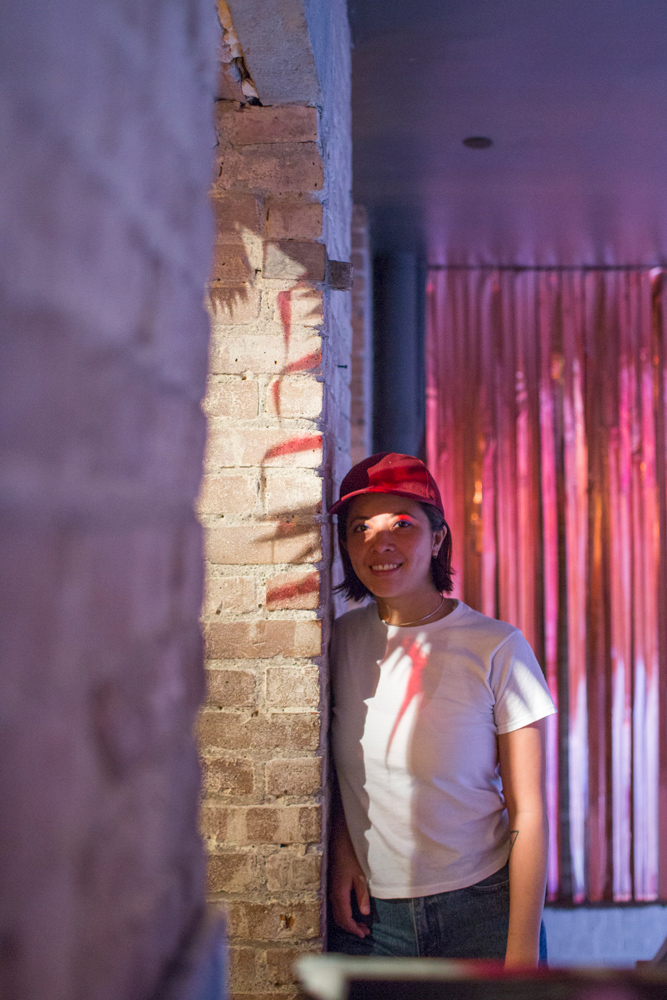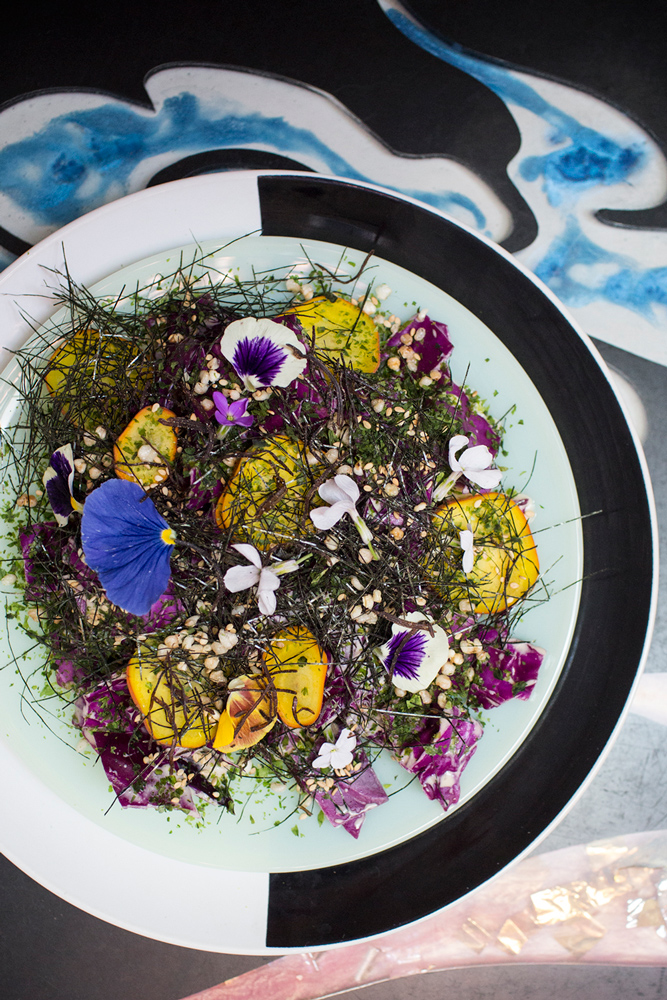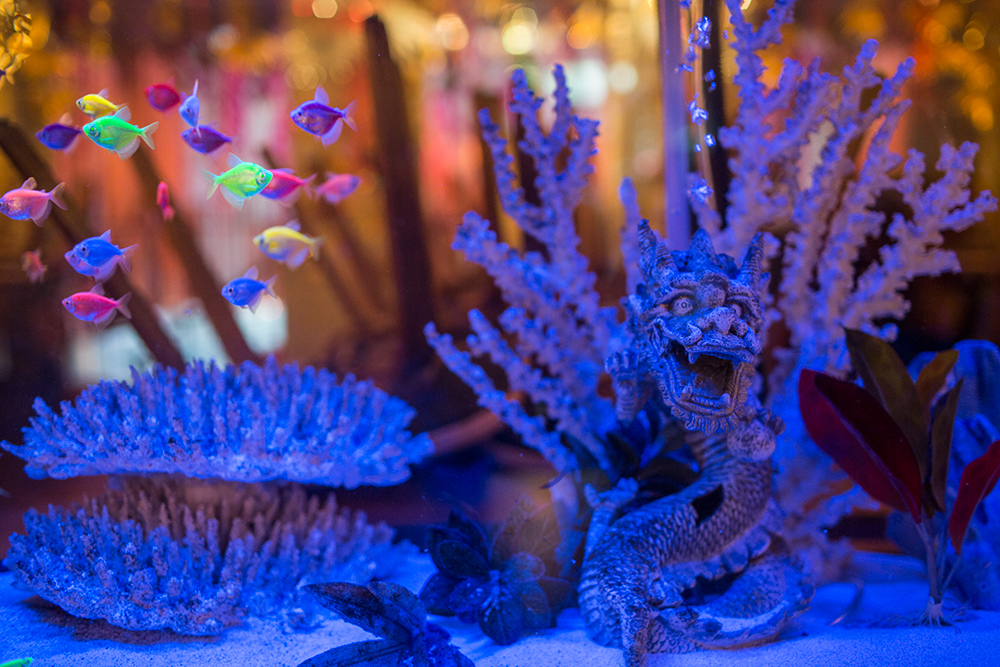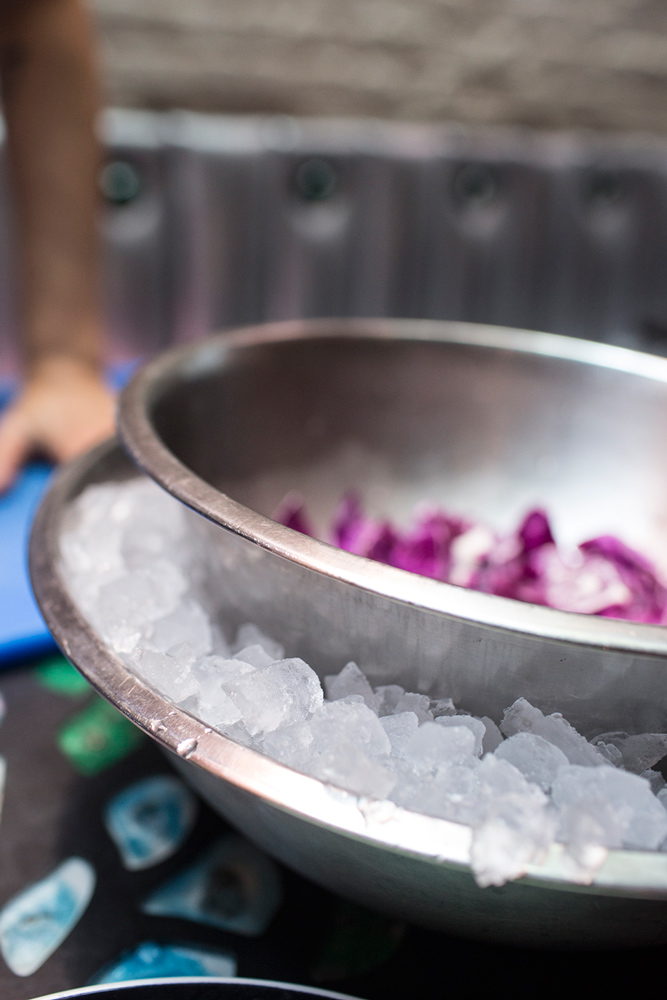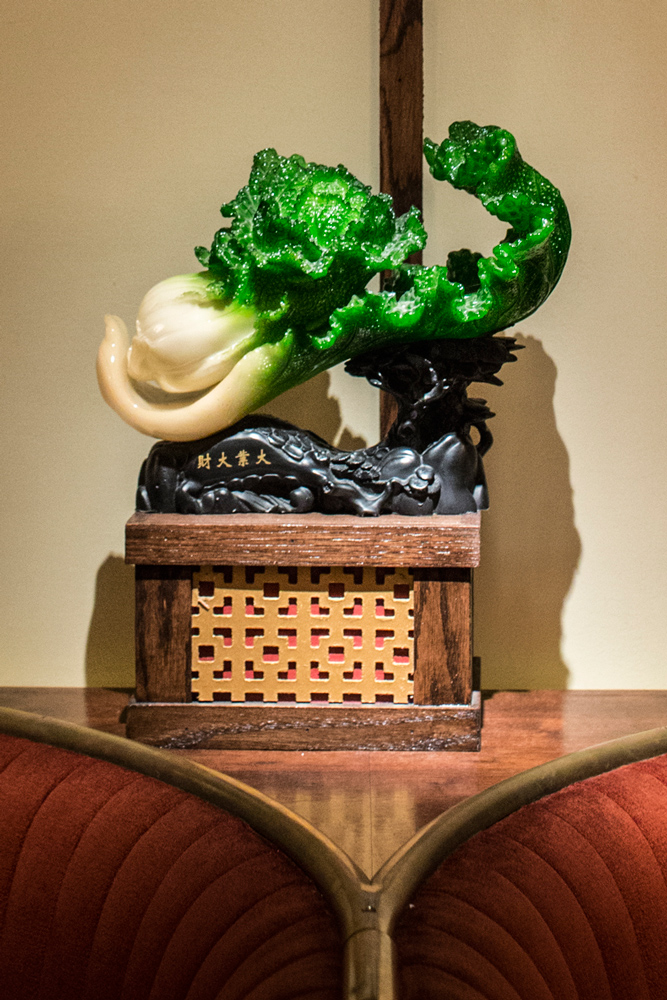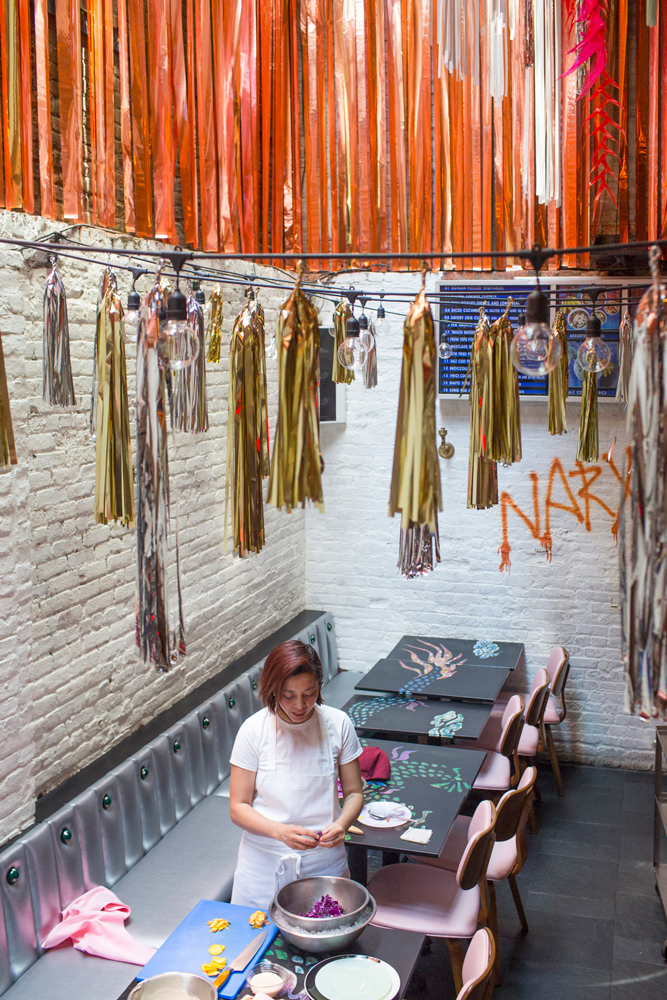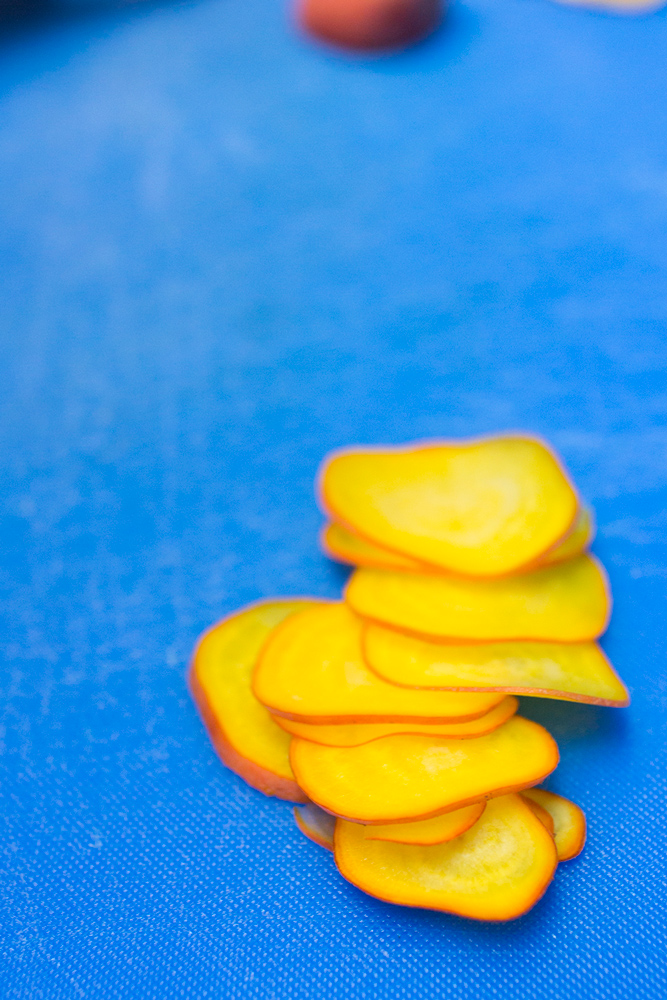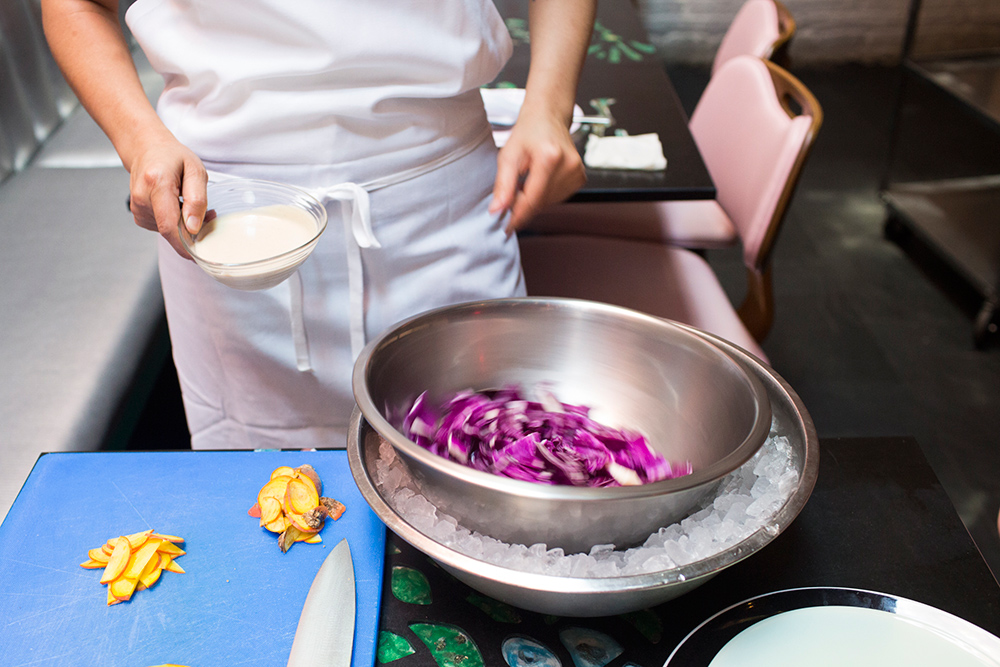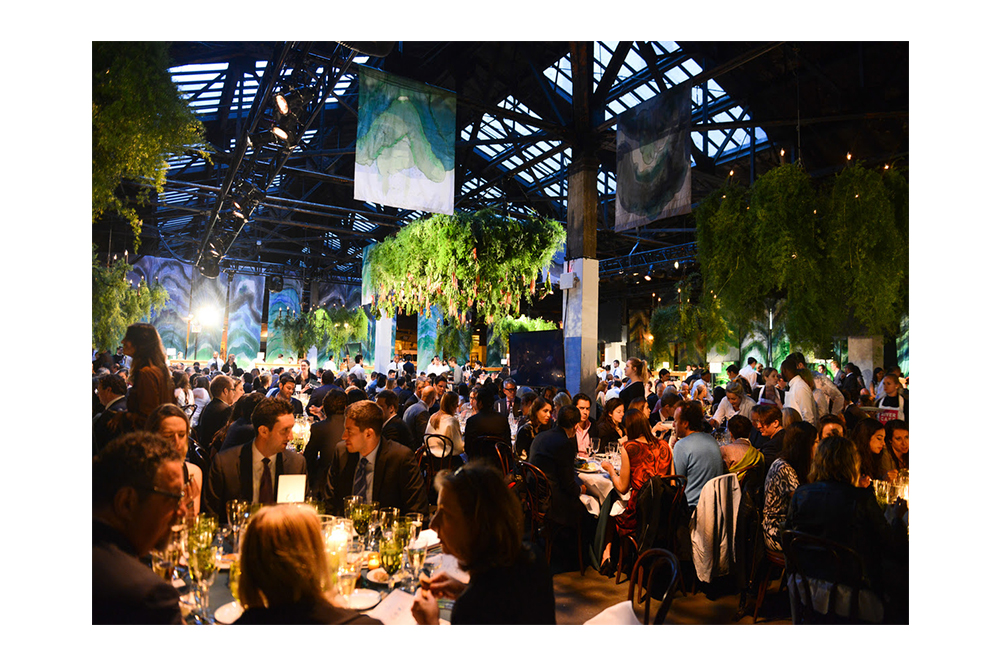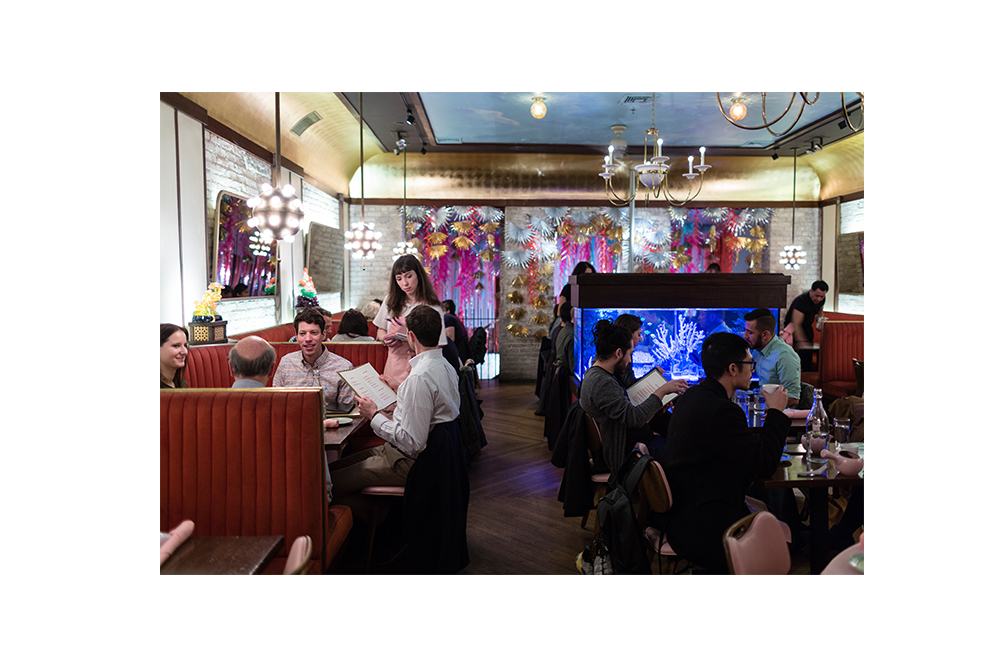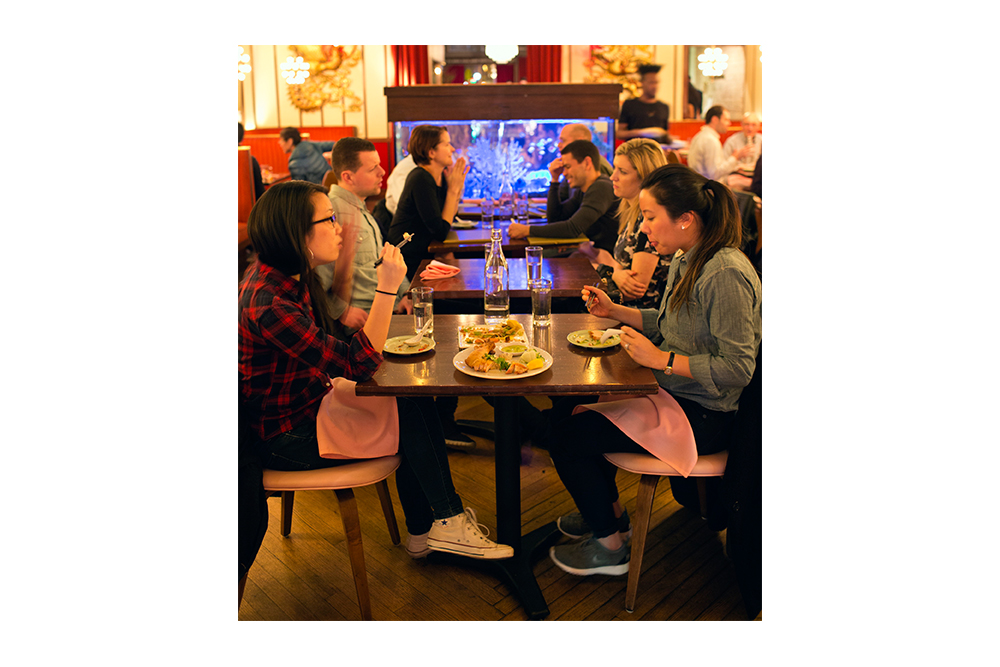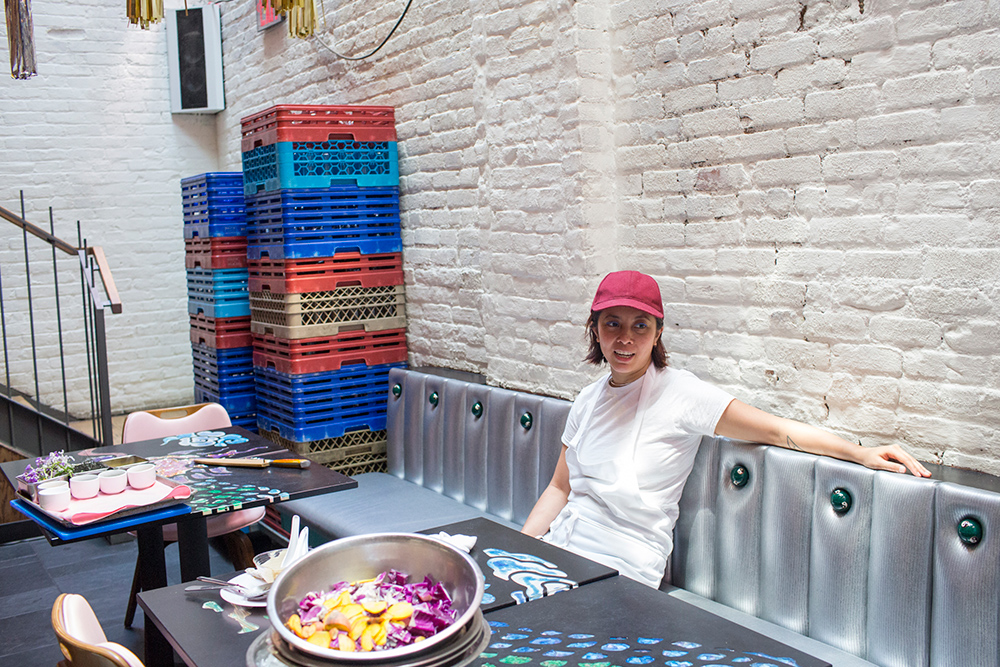Cabbage, Seaweed, Edible Flowers and Tahini-Anchovy Dressing
Angela Dimayuga’s Tableside Cabbage Salad
NOTES
For the seaweed, I like to use shio kombu and kizami nori, both available at specialty Japanese markets, but feel free to used dulse flakes, toasted nori torn into small pieces, or even ground into a powder. Feel free to use edible flowers for additional garnish.
RECIPE
DIFFICULTY
MODERATE
SERVES
2
PREP TIME
30 MINS
Popped Kasha
-
3cupsneutral oil, such as grapeseed or canola
-
2tspkasha
-
salt, to taste
Dressing
-
1lemonjuiced
-
1tbsprice vinegar
-
2tbspwhite miso
-
3tbsphigh-quality tahini
-
1tbspsoy sauce
-
6anchovy fillets, minced
Salad
-
1/2headred cabbage, cored + diced into 1" cubes
-
1smallbaby beet, yellow or candy-striped, peeled and sliced into 1/8-inch rounds
-
1tspsesame seeds
-
2tbspaonori, or your favorite seaweed
There are few restaurants in New York that excite me. I don’t like being served and I tend to prefer homemade food. But at Mission Chinese Food, chef Angela Dimayuga made me feel like I was eating at her kitchen table, despite the complexity of the meal and all the thought that had went into its making. Angela explained each salad in detail, every ingredient choice and its provenance. I felt intimately connected to the food I was eating because and I knew how much each dish meant to her. This was personal. Angela cooks like an artist, taking cues from sources high and low, from travel abroad, from the Chinese buffet and haute cuisine at the same time. It’s an elevated experience without an ounce of pretension, one that requires her brain spin on all cylinders.
Angela and I bumped into one another at the recent Edible Schoolyard NYC benefit, where she a Danny Bowien were cooking alongside the best chefs in the business. Salad makes a big splash at this affair, where urban farming and vegetable literacy are the raison d’etre. Edible Schoolyard NYC partners with public schools to integrate hands-on food education into high-need schools across New York City. Needless to say, the supporters and masterminds of this program know a good salad when they see one. I asked Angela what was on her menu for the night, and not surprisingly, there were some theatrics involved. Her salad would arrive on a cart, served table-side in a bowl of crushed ice. The mix of red cabbage and golden beets would be twirled, dressed with tahini and garnished to the max with seaweed, flowers and puffed kasha. This was more than salad, this was entertainment. I visited Angela at Mission Chinese Food to recreate the dish and pilfer her recipe for those of you looking to add a little sparkle to your repertoire.
Angela Dimayuga in Her Own Words
Julia Sherman: Where did the inspiration for this salad come from?
Angela Dimayuga: This was my first contribution to the Mission Chinese Food menu way back in 2012 when MCF NY on Orchard opened up. I was playing with tahini, anchovy, and lemon for a dressing because I loved noshing on raw cabbage like a chip and thought it would be a great vehicle for an anchovy dressing. Seaweeds were for me a fun pantry item to play with and I was just introduced to kasha as a Jewish food staple, so popping it and adding it to the dish like a mini crouton was a fun option that worked even with the raw cabbage being so crunchy. I really wanted to make something that could stand next to Chef Danny’s really spicy, hot, and popular Sichuan dishes, and this was it.
JS: Are you playing with a kind of high-low thing here? I love that aspect of Mission. Especially the decor, and I know you were the mastermind there.
AD: Yes! We use a really great tahini that is made by Soom, so it’s the best stuff you can get. The cabbage is so cheap and a great canvas for loads of flavor. The shio kombu we use is such a specialty product and pretty pricey, but really makes this salad go the distance. The decor is supposed to be a fun, thoughtful and timeless. It feels experimental and contemporary but classic and really reflect what we’re trying to do with our menu.
JS: Although it’s not exactly what you are known for, you really make the most amazing salads. What challenges and rewards does salad provide you as a chef, that other dishes might not?
AD: It’s a really great starting point for you to understand your own palette as a chef. You see how you can manipulate raw veg and test where your palette is trending, because it’s always progressing. I’ve noticed that recently I prefer a dressing that has no fat, and you can let flavors shine without the traditional format of acid, oil, and salt.
JS: I feel like you are always drawing on unusual source material for your food and events. Are the theatrics of presentation something that always consider? What are some of your favorite books/references when it comes to parties and dining experience?
AD: Yes, I think that food is very experiential, that in the right context and setting the sum of the events or the place that you are in really help the dining experience. Feeding people can be more than putting food on a plate. I’m really into Pierre Herme’s Ispahan and Desserts for the beautiful photography and usage of flowers. The Beauty of the Fold has photographs with really elegant napkin folding, an element we’ve used in special dinners a lot last year.
JS: Tell me about some of the parties and themed dining experiences you guys have put together at Mission Chinese?
AD: A Chinese banquet-themed dinner with Opening Ceremony, where we used red roses and napkin origami for the first time. We did tableside carving of a hickory-smoked whole prime rib for the first time as well and have used it as a main event for so many other parties. I did a small Chinese buffet for the cast of Hamilton in the Richard Rogers Theater lobby where we also fed them the whole smoked prime rib…I really wanted to celebrate their hard work and feed the cast. I learned that with their rehearsals and performances they hardly get to sit down for a proper meal. I also set up a small table for them that featured our drink fountain for the first time in an elaborate display with decorative flowers and tropical fruits and a coconut chocolate fondue fountain. One my most favorite parties was our Lunar New Year party, where I asked a large group of chef friends to contribute to our potluck and surprised our 7:00 P.M. seating with a bunch of Lion Dancers who performed throughout our restaurant.
JS: When I talk to you about food, it feels like I am talking to an artist. You are always trying to reinvent ingredients, use them in new ways and surprise people. Do you feel pressure to innovate, to do something totally unexpected?
AD: I feel that food allows us to play, and with the blanket name of the restaurant being pretty vague, we can really play with boundaries of Asian cuisine. Our clientele seems to be okay with that fact that we are constantly progressing and often actually look to us for what’s next. We think about food in a nonlinear way, try to deconstruct even basic ingredients, and re-conceptualize their use to innovate for fun’s sake and to satisfy our curiosities.
